Two-Dimensional CWT of Noisy Pattern
This example shows how to detect a pattern in a noisy image using the 2-D continuous wavelet transform (CWT). The example uses both isotropic (non-directional) and anisotropic (directional) wavelets. The isotropic wavelet is not sensitive to the orientation of the feature, while the directional wavelet is.
Visualize Isotropic Wavelet
Use the isotropic (non-directional) Mexican hat wavelet, also known as the Ricker wavelet, and the anisotropic (directional) Morlet wavelet. Demonstrate that the real-valued Mexican hat wavelet does not depend on the angle.
Y = zeros(32,32); Y(16,16) = 1; cwtmexh = cwtft2(Y,wavelet="mexh",scales=1, ... angles=[0 pi/2]); surf(real(cwtmexh.cfs(:,:,1,1,1))) shading interp title("Angle = 0 Radians")
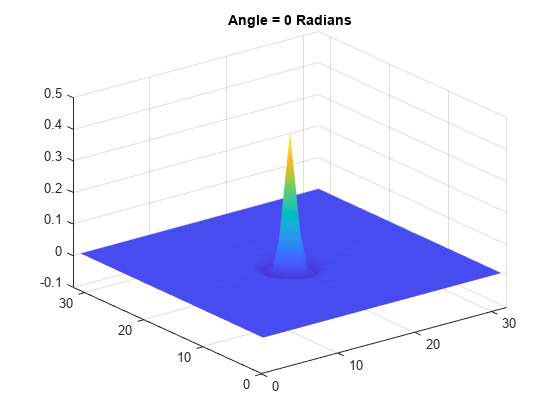
Extract the wavelet corresponding to an angle of /2 radians. The wavelet is isotropic and therefore does not differentiate oriented features in data.
surf(real(cwtmexh.cfs(:,:,1,1,2))) shading interp title("Angle = \pi/2 Radians")
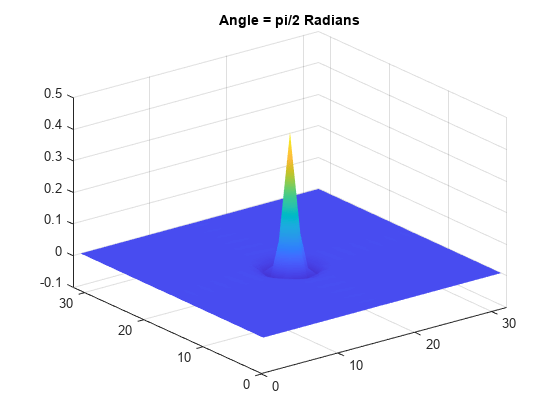
Visualize Anisotropic Wavelet
Repeat the preceding steps for the complex-valued Morlet wavelet. The Morlet wavelet has a larger spatial support than the Mexican hat wavelet, therefore this example uses a larger matrix. The wavelet is complex-valued, so the modulus is plotted.
Y = zeros(64,64); Y(32,32) = 1; cwtmorl = cwtft2(Y,wavelet="morl",scales=1, ... angles=[0 pi/2]); surf(abs(cwtmorl.cfs(:,:,1,1,1))) shading interp title("Angle = 0 Radians")
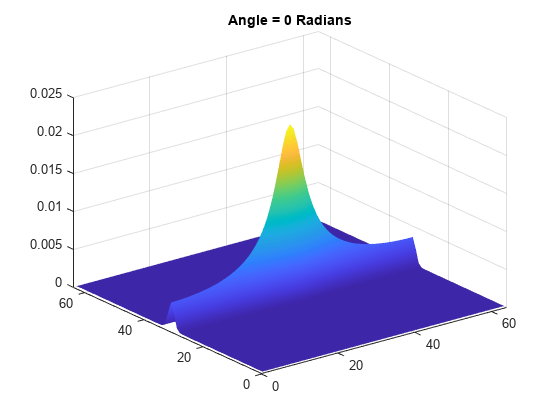
Extract the wavelet corresponding to an angle of /2 radians. Unlike the Mexican hat wavelet, the Morlet wavelet is not isotropic and therefore is sensitive to the direction of features in the data.
surf(abs(cwtmorl.cfs(:,:,1,1,2))) shading interp title("Angle = \pi/2 Radians")
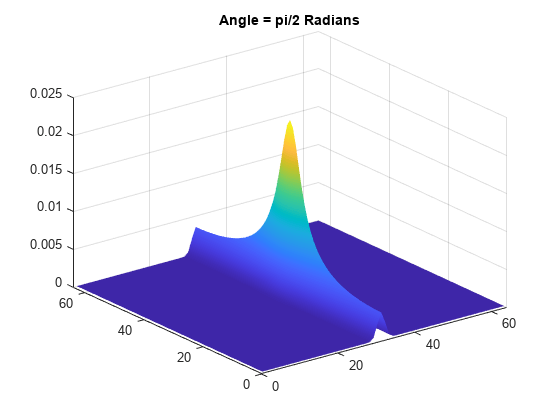
Detect Pattern
Apply the Mexican hat and Morlet wavelets to the detection of a pattern in noise. Create a pattern consisting of line segments joined at a 90-degree angle. The amplitude of the pattern is 3 and it occurs in additive N(0,1) white Gaussian noise.
X = zeros(256,256);
X(100:200,100:102) = 3;
X(200:202,100:125) = 3;
X = X+randn(size(X));
imagesc(X)
axis xy
Using Isotropic Wavelet
Obtain the 2-D CWT at scales 3 to 8 in 0.5 increments with the Mexican hat wavelet. Visualize the magnitude-squared 2-D wavelet coefficients at scale 3.
cwtmexh = cwtft2(X,wavelet="mexh",scales=3:0.5:8); surf(abs(cwtmexh.cfs(:,:,1,3,1)).^2) view(0,90) shading interp axis tight
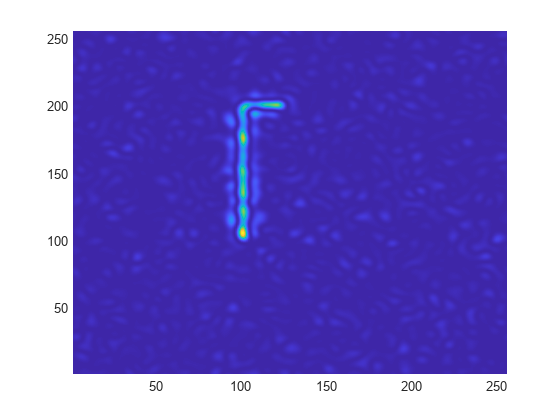
Using Anisotropic Wavelet
Use a directional Morlet wavelet to extract the vertical and horizontal line segments separately. The vertical line segment is extracted by one angle. The horizontal line segment is extracted by another angle.
cwtmorl = cwtft2(X,wavelet="morl",scales=3:0.5:8, ... angles=[0 pi/2]); surf(abs(cwtmorl.cfs(:,:,1,4,1)).^2) view(0,90) shading interp axis tight
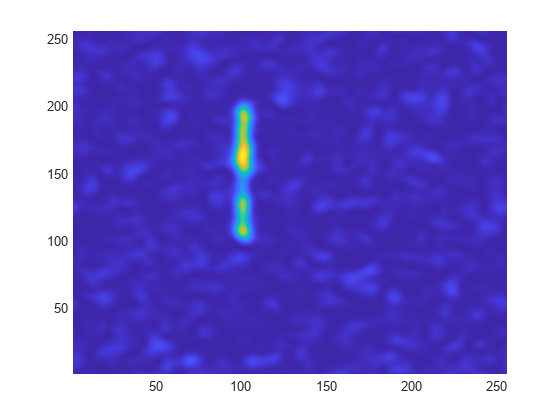
figure surf(abs(cwtmorl.cfs(:,:,1,4,2)).^2) view(0,90) shading interp axis tight
